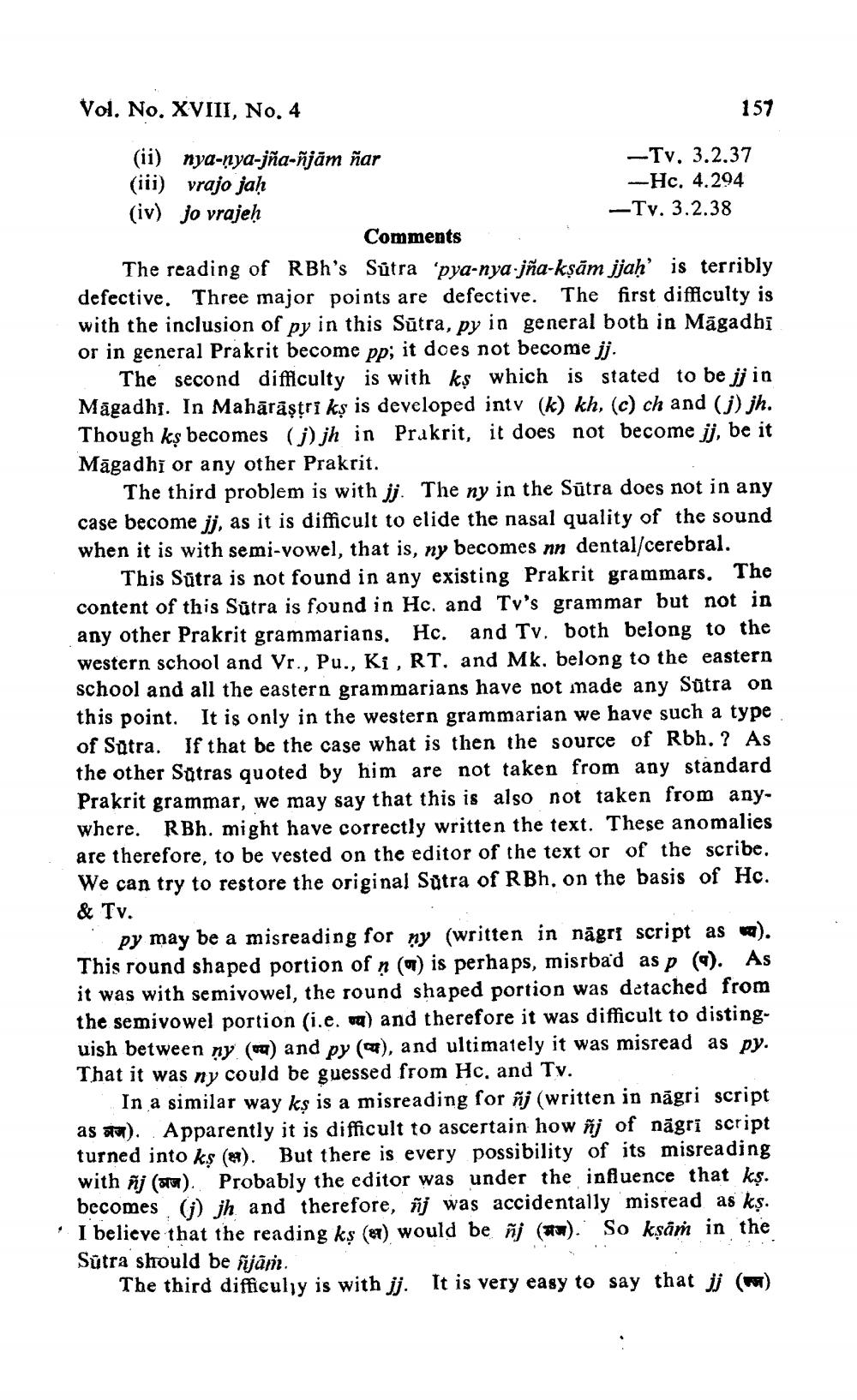________________
Vol. No. XVIII, No. 4
157
(ii) nya-nya-jña-ñjām ñar
-Tv. 3.2.37 (iii) vrajo jah
Hc, 4.294 (iv) jo vrajeh
–Ty. 3.2.38 Comments The reading of RBh's Sūtra 'pya-nya jña-kşām jjaħ' is terribly defective. Three major points are defective. The first difficulty is with the inclusion of py in this Sūtra, py in general both in Māgadhi or in general Prakrit become pp; it does not become jj.
The second difficulty is with ks which is stated to be jj in Māgadhs. In Mahārāștri kş is developed intv (k) kh, (c) ch and (i) jh. Though kş becomes (j) jh in Prakrit, it does not become jj, be it Māgadhi or any other Prakrit.
The third problem is with jj. The ny in the Sūtra does not in any case become jj, as it is difficult to elide the nasal quality of the sound when it is with semi-vowel, that is, ny becomes nn dental/cerebral.
This Sūtra is not found in any existing Prakrit grammars. The content of this Sūtra is found in Hc. and Tv's grammar but not in any other Prakrit grammarians. Hc. and Tv. both belong to the western school and Vr., Pu., Ki, RT. and Mk. belong to the eastern school and all the eastern grammarians have not made any Sūtra on this point. It is only in the western grammarian we have such a type of Sutra. If that be the case what is then the source of Rbh.? As the other Satras quoted by him are not taken from any standard Prakrit grammar, we may say that this is also not taken from anywhere. RBh. might have correctly written the text. These anomalies are therefore, to be vested on the editor of the text or of the scribe. We can try to restore the original Sūtra of RBh, on the basis of Hc. & Tv.
py may be a misreading for ny (written in nāgrt script as w). This round shaped portion of n (a) is perhaps, misrbad asp (a). As it was with semivowel, the round shaped portion was detached from the semivowel portion (i.e. a) and therefore it was difficult to distinguish between ny (na) and py (c), and ultimately it was misread as py. That it was ny could be guessed from Hc, and Tv.
In a similar way kş is a misreading for ñj (written in nāgri script as aa). Apparently it is difficult to ascertain how ñj of nāgri script turned into ks (). But there is every possibility of its misreading with ñj (star). Probably the editor was under the influence that ks. becomes (j) jh and therefore, ñj was accidentally misread as kş. I believe that the reading ks (2) would be ñj (H). So kşāṁ in the Sūtra should be fijām.
The third difficuly is with jj. It is very easy to say that jj ()




